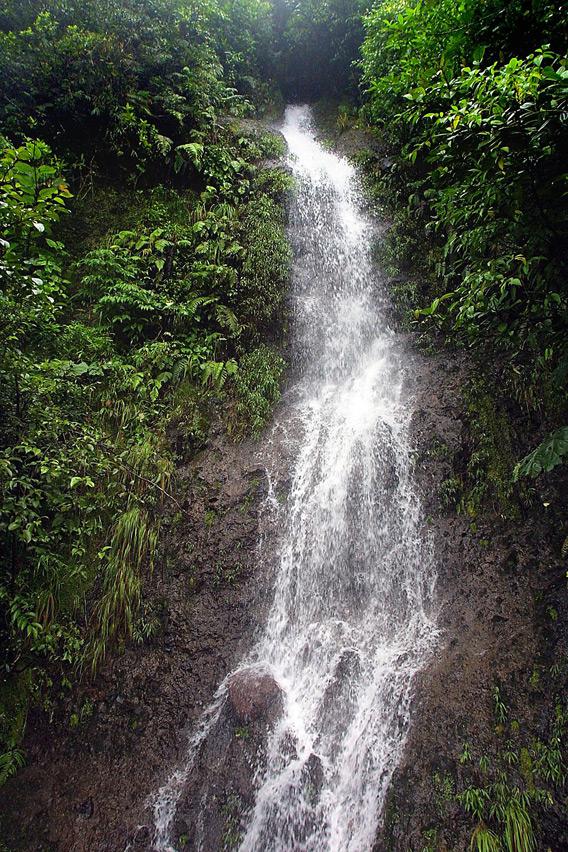Wild elephants roam across the crowded plains of India; forested river banks wind through cattle ranches in Brazil; a ribbon of green stretches across Europe where the Iron Curtain used to be.
Using such wildlife corridors to link up larger but isolated protected areas are the most widely adopted strategy for halting biodiversity decline, with tens of millions of dollars spent creating and protecting them every year. But do they work? Has enthusiasm for a neat idea got ahead of the science? Might corridors sometimes do more harm than good?
The principle is simple. As wildlife habitat is broken into isolated fragments by farms, roads, and settlements, we need to link them up with corridors of green. That way, even if the entire habitat cannot be re-created, old migration patterns can be revived, escape routes created ahead of climate change and—perhaps most crucially—isolated populations can interbreed, enhancing their genetic diversity and their resilience to encroaching threats.
The idea started with one of the icons of conservation science, E.O. Wilson of Harvard University. His 1960s work on islands revealed how isolated ecosystems were threatened by their isolation.
Corridors were the obvious answer and, half a century on, they are all the rage in national conservation plans from Australia to Zambia.
Many are cross-border, such as the Selous-Niassa Corridor linking Tanzania and Mozambique, and the Lower Danube Green Corridor across Romania, Bulgaria, Ukraine, and Moldova. When the Iron Curtain fell two decades ago, governments from both sides rushed to convert the border zone into a corridor for the wildlife that had prospered amid the land mines, barbed wire, and gun placements. All seven countries of Central America and Mexico have agreed to join together their many small protected areas in a MesoAmerican Biological Corridor that will ultimately link North and South America.
After several decades of activity, you might expect good research evidence on the advantages of both newly created corridors and the natural corridors that mimic them. But that’s not the case.
Recently, Paul Beier, a veteran conservation biologist from North Arizona University at Flagstaff, and his colleague Andrew Gregory, warned that “despite much research, there is little evidence that conservation corridors work as intended.”
There is, they say, plenty of evidence that wild animals will move through corridors. But advocates of the corridors want, and claim, much more than this. They say that animals don’t just go for a walk in their conservation woods, but that they move permanently and interbreed with neighboring populations. In this way corridors supposedly unite isolated, threatened populations into an interbreeding—and much more resilient—whole.
Such claims sometimes hold up. In the United Kingdom, the expansion of Kielder Forest in Northumberland in the 1950s and ‘60s provided a link between isolated populations of threatened red squirrel. Genes from isolated populations have now “leapfrogged through hundreds of forest fragments” across 100 kilometers and more.
But the Kielder Forest is much wider than a conventional corridor. Few studies have looked for gene flow in genuine corridors; even fewer have found it. One study investigated the genetic diversity of small marsupials in a narrow forest corridor traversing 4.5 kilometers of grazed grasslands in Queensland, Australia. It found that genetically distinct populations had persisted at either end. Mixing was a myth.
Other studies have shown that conservation corridors work. But most have looked at short corridors of 100 meters or so through largely natural landscape. “Just because species can use and travel along short corridors in a natural setting does not mean that they will be successful dispersing along much longer corridors embedded in a large, heavily impacted landscape,” says Gregory. “Still less that such movements occur frequently enough to allow enough gene flow to occur so that the connected habitat blocks function as one population.”
Many corridors are useless. Developers in the Brazilian Amazon are required by the national Forest Code to leave 60-meter-wide forest strips along riverbanks. But a study of birds and animals in those corridors found that anything with a width less than 400 meters had no benefit on the numbers of species along the banks, let alone on promoting gene transfer. Yet, far from widening the corridors, the Brazilian parliament recently voted to relax the Forest Code.
This all matters because big claims are made for conservation corridors. The suggestion is that they can minimize the impact of development by substituting for wild habitat. If that is wrong, much of our conservation efforts will come to naught. Gregory and Beier have set up a project, Do Corridors Work?, to work out what makes a successful corridor, and have issued a plea for help finding ones to investigate.
Perhaps we should not make the perfect the enemy of the good. Surely any corridor is better than none? But consider this. The edges of wild areas are known danger zones for wildlife, where predators and diseases may invade. Linking two existing protected areas with a long narrow corridor may expose it to greater danger along these edges. Unless the benefit exceeds the threat, then there is serious potential to do harm.
Gregory and Beier do not dismiss corridors altogether. They believe they can still work, if designed properly. The problem is, we don’t really know what that means.
This article originally appeared in New Scientist.
